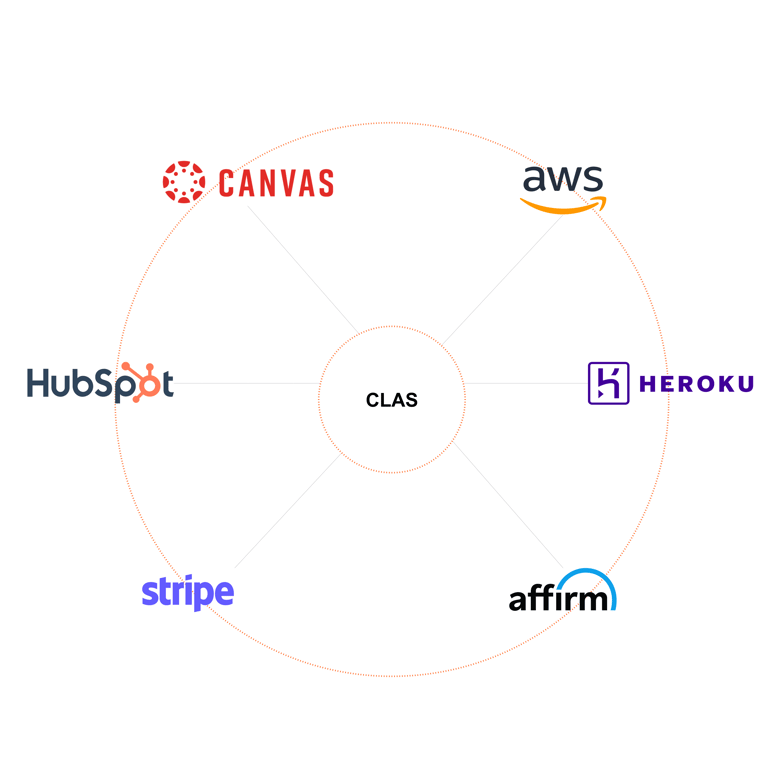Every organization wants to scale up—but few are ready for the growing pains that come with serving bigger audiences.
Scaling up reveals problems that weren’t obvious when an organization was small, particularly in the area of operations. As increased demand pushes the organization’s basic tech stack beyond its limits, leaders are forced to hire more and more people to manually resolve a spiraling number of communication issues between software solutions.
Between endless hiring cycles and ballooning to-do lists, it can seem like the organization’s tools are creating more issues than they solve!
This scaling challenge is a technical problem that requires a technical solution. No amount of new hires can solve for siloed operations.
In this blog post, we’re going to outline how organizations get stuck in this vicious cycle. We’ll also explore a couple of case studies from the Free Range archive to show how organizations can overcome scaling problems, improve efficiency, and reduce headaches.
The Problem
Organizations often start out using “out of the box” tools—platforms or products built to help with critical functions like marketing, sales, onboarding, etc. These third-party solutions can be an excellent option for new organizations hoping to keep costs down. Relatively affordable and designed with the broadest possible range of users in mind, out of the box tools can be an easy, affordable way to handle small numbers of customers or clients at a low level of complexity.
Unfortunately, because these solutions are owned and operated by third parties, they cannot share data with multiple other tools without integrations. A given organization might use one company’s platform to track its finances, another to manage enrollments in its course offerings, and still another to handle HR needs—all with none of these systems “talking to” each other. This leaves leadership without a clear understanding of the organization's operations and creates problems as more and more client information gets backed up in siloes.
At this point, leadership may invest in operational workarounds and more new hires to fix these problems on a case-by-case basis—but this fails to address the underlying problem. As long as an organization keeps addressing issues with piecemeal operational workarounds, the lack of communication between third-party platforms will continue to create new problems at an exponential rate.
 The Solution
The Solution
To remove manual data processing bottlenecks and scale up smoothly, a growing organization needs to get all the different tools HR, sales, CRM, and finance, to talk to each other.
Beyond a certain point, it becomes impossible for human employees to manually cover tech stack shortcomings in a cost-effective way. When an organization reaches this level of complexity, it will need to develop a custom software solution that:
- Allows third-party apps to communicate automatically and seamlessly with each other, and
- Makes it easy for leadership to gather insights about the organization’s operations
Here at Free Range, we love helping growing organizations gain a deep understanding of their unique operations challenges and opportunities—and develop custom software solutions that allow them to scale up sustainably. Here are a couple of our favorite examples . . .
Imogen Foundation
Imogen, an afterschool program management company, had been using Jumbula as its e-learning enrollment platform. While this solution worked well enough during the company’s first few years in operation, Imogen soon had to set up multiple workarounds to adapt the software to a growing number of clients.
For instance, while the Imogen management team needed information about past enrollments to accurately compensate contractors, the Jumbula platform didn't offer an easy way for users to access this information. Imogen staff worked around the problem by manually keeping track of enrollments with Google Sheets—a system that began to fail when the company's client base rapidly scaled from one school to six.
With costs and headaches rising, Imogen turned to Free Range for help creating a solution. Today, we are working together to develop smoother operations for Imogen as the company scales.

Ziplines (Formerly GreenFig)
Like the Imogen Foundation, Ziplines is an education company, focused on providing college students real-world experience with in-demand fields through unique course offerings. Also like Imogen, Ziplines ran into trouble when a partnership with a large university increased their client base 15x almost overnight.
Ziplines had been using Stripe and Hubspot as independent systems for payments and customer relationship management, respectively. While these siloed systems worked fine at a small scale, the jump from 100 to 1,500 students forced Ziplines to hire an expensive team, whose main job was to spend hours per day manually matching customer records on Hubspot with payments on Stripe.
Free Range helped Ziplines smooth out its operations by building a “wrapper” around HubSpot and Stripe, allowing the siloed systems to talk to each other and automate multiple operations. Free Range continues to support Ziplines and build operational automation as the company scales.

The Need for Custom Solutions
Here at Free Range, we have observed these scaling challenges play out with many of our growing clients.
At one point, we thought we might be able to create a SaaS product that would solve this same issue for many clients across the board. Experience has shown us, however, that adding another generalized SaaS tool into the mix only prolongs the inevitable. Every organization’s operations are unique and, sooner or later—to truly solve its problems—every organization needs to develop its own customized solution.
Today, we begin all of our product development initiatives with discovery sessions that help us determine whether a given organization should:
- Write custom wrappers on top of existing tools (preferred)
- This helps the client automate operations over a period of time. Breaking the solution into phases makes the transformation digestible monetarily and supports existing operations sustainably.
- Replace entire systems (sometimes necessary)
- This more extreme approach may be necessary when one or more tools in the organization’s tech stack have become obsolete and don't allow for wrappers to be written on top of them.
We also offer these same discovery sessions for free to growing companies who are considering their options—zero obligation. Whether or not Free Range is the perfect fit for your needs, we’d love to get into the weeds, understand your operations, and suggest some creative approaches to solving your scaling problems.
Would you be interested in booking three free discovery sessions to get your customized solution to your scaling problem? If yes, please set up an intro meeting with me by clicking the button below.
.webp)


.webp)

